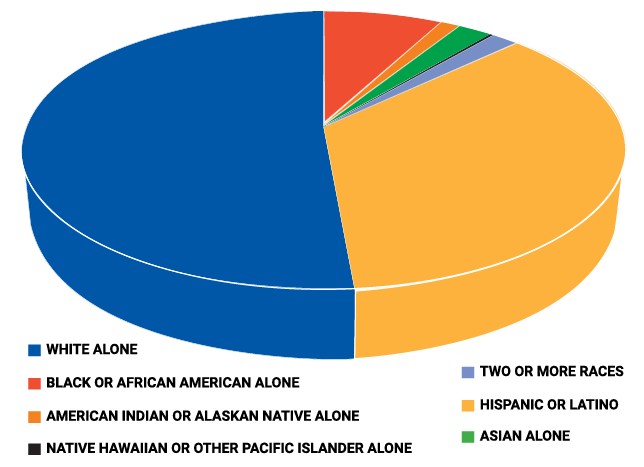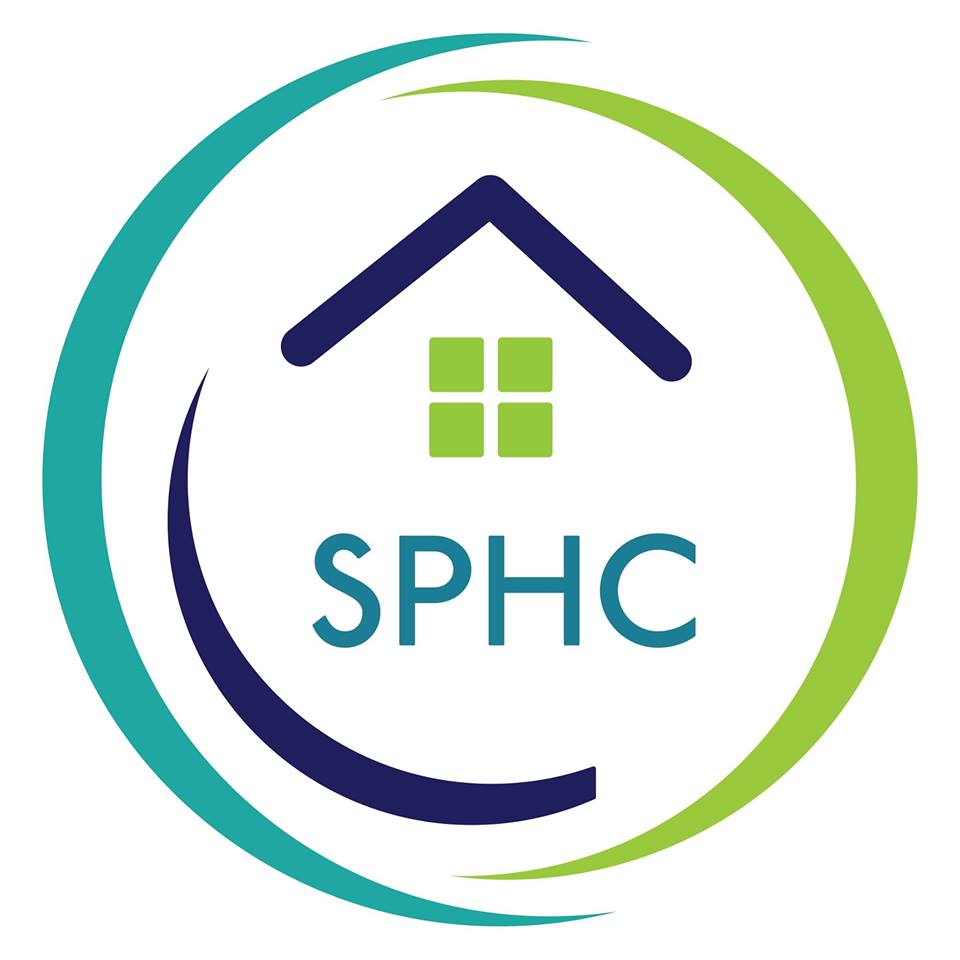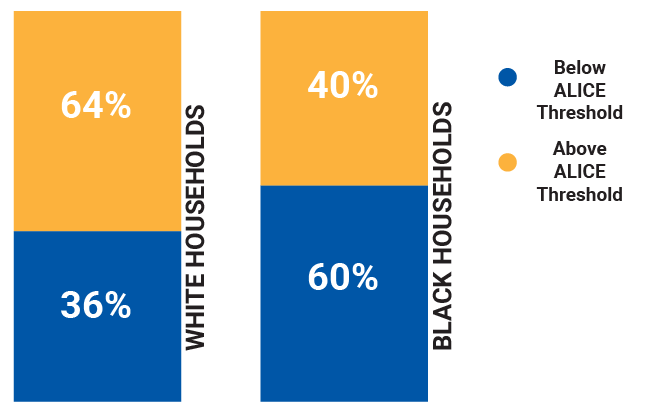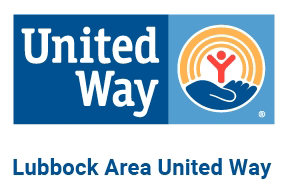
HOME | PRIORITIES & INDICATORS | EDUCATION | SAFETY | MENTAL HEALTH | POPULATION | ECONOMICS | HEALTH | WHERE DO WE GO FROM HERE | SOURCES
Population
United Ways across Texas fight for the health, education, and financial stability of every person in our community.
Population Growth
Lubbock is the 11th largest city in Texas, the 2nd largest west of Interstate 35 and is projected to grow 7% through 2022. The 2020 Census estimates a total population of 312,832 for Lubbock County. By 2025, total projection is 331,839.
“Lubbock’s age structure differs substantially from the national and state patterns. This is mainly attributed to our large college-age population found at Texas Tech University. Over one-fourth of the City of Lubbock’s population (26%) falls between the ages of 21 and 34, compared to 19% for the U.S. and 20% in Texas overall.” (LEDA)
Demographics in Lubbock County
As seen across the state and nation, the overall population continues to shift. Texas’ hispanic population is on track to be the largest population group as soon as 2022. This trend is evident across the South Plains and in Lubbock County. The shift in overall population further emphasizes the need for nonprofits and organizations to ensure their leadership matches the demographics they serve.
In addition to this change, the median age in the City of Lubbock is 30.49. This compares to a median age of 35.22 in Texas and 38.65 in the U.S.
Ideally, results of the 2020 census will give the South Plains accurate demographic information to better reflect the community.

Homelessness
 The Lubbock community has a long history of collaboration among organizations committed to serving people experiencing homelessness. The South Plains Homeless Consortium is vital in bringing together organizations and agencies committed to this issue. Their annual Point in Time count helps accurately track the local homeless population.
The Lubbock community has a long history of collaboration among organizations committed to serving people experiencing homelessness. The South Plains Homeless Consortium is vital in bringing together organizations and agencies committed to this issue. Their annual Point in Time count helps accurately track the local homeless population.
“For the third year in a row, the overall number of homeless individuals in Lubbock decreased. The number of homeless children counted was significantly greater than last year, as was the number of homeless individuals who were Black.” (Point in Time Survey)
The Salvation Army of Lubbock has programs and services to successfully address chronic homelessness, emergency sheltering, life-sustaining provision, and transitional/long-term housing solutions. All programs aim to remove barriers that prevent clients from achieving self-sufficiency and long-term life stability; because homelessness is often not a choice. “Homelessness is a symptom of many issues such as a lack of affordable housing, being under-employed or fully employed, lack of skills or education level, intergenerational poverty issues, mental health and addiction challenges and domestic violence.” (Salvation Army)
ALICE
ALICE is an acronym for Asset Limited, Income Constrained, Employed – households that earn more than the Federal Poverty Level, but less than the basic cost of living for the county (the ALICE Threshold). Combined, the number of ALICE and poverty-level households equals the total population struggling to afford basic needs.
= 42% Total families struggling to afford basic needs in Lubbock County
Why do so many households struggle?
Despite an average 3% unemployment rate (pre-COVID), over 40% of the population in Lubbock County struggles to make ends meet as demonstrated above. The number of adults and children living in poverty in Lubbock County is drastically higher than the Texas and U.S. average despite having better rates of the number of adults with at least a high school education.
In addition, data from United For ALICE shows the persistent and widening disparities in income and wealth between Black households and households of other races and ethnicities.
When 40% of American households do not earn enough to cover basic expenses, it proves a structural economic problem. Wages simply are not keeping pace with increases in cost of living across the nation.
Yet for Black households, those numbers are far higher. “Our analysis of the real cost of living in every U.S. count shows that 60% of Black households are unable to afford basic household essentials in their communities. This is three times the rate shown by the Federal Poverty Level (FPL) and nearly double the rate of hardship for White households.” (UWW ALICE; American Community Survey, 2020)

Foster Care
The Department of Family and Protective Services is rolling out Community-Based Care (CBC) in different stages across the state. Lubbock is a part of Region 1 as designated by the state. Beginning January 2020, Saint Francis Ministries has taken over as the contractor for all of Region 1 and began implementing Stage 1 of CBC.
The focus of Stage 1 is for Saint Francis to develop a network of services and provide foster care placement services. They are charged with improving the overall well-being of children in foster care and keeping them closer to home and connected to their communities and families. Stage II (which provides case management for families and children) will be instituted after legislative action. (DFPS)
As previously discussed, Lubbock county consistently faces high rates of child abuse and neglect.
“The foster care system in Lubbock is strained by increasing numbers of children and youth removed from home. Meanwhile, the foster care system is also undergoing a significant transition as the region moves from a traditional state-run care model to the community-based care (CBC) model. Through the CBC foster care model, a private entity (Saint Francis Ministries), is now responsible for child placements and outcomes. Children in foster care are a particularly vulnerable population, and interviews revealed several issues in accessing care amid a significant recent increase in removals.” (Meadows Institute Report)
Collaboration among local service providers and existing groups like the South Plains Coalition for Child Abuse Prevention will be key in moving forward as the new system is built.

